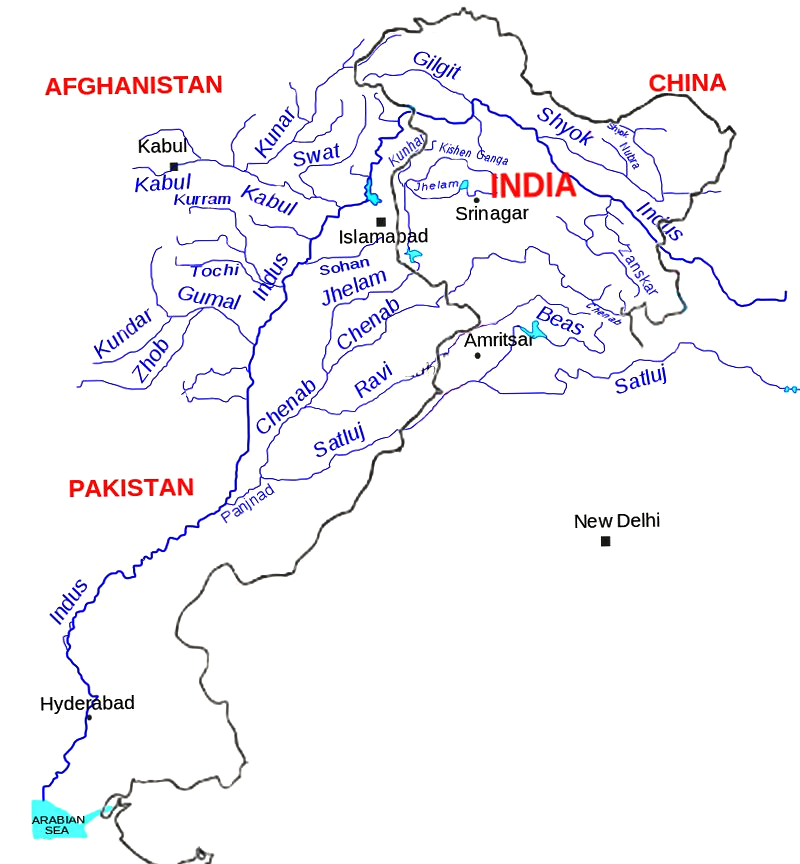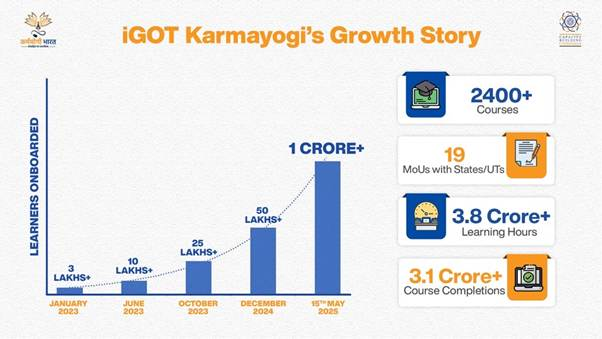Jammu & Kashmir Switch to Hindi
Kiru Hydroelectric Power Project (KHPP)
Why in News?
The Central Bureau of Investigation (CBI) has filed a chargesheet against former Jammu & Kashmir Governor Satya Pal Malik and others in a Kiru Hydroelectric Power Project (KHPP) corruption case.
Key Points
Kiru Hydroelectric Power Project (KHPP)
- About:
- The KHPP is envisaged as a Run-of-River scheme and was launched in 2019.
- It is scheduled for commercial operation by July 2025.
- It is a strategically located hydroelectric initiative in the Kishtwar district of J&K, positioned between the Kirthai II (upstream) and Kwar (downstream) power projects.
- Developed at an estimated cost of Rs 4,287 crore, it is a key component of India's efforts to boost renewable energy infrastructure in the northern region.
- The KHPP is envisaged as a Run-of-River scheme and was launched in 2019.
- Project Specifications:
- Location: Near the confluence of the Chenab River with Singad and Bela streams, close to Patharnakki and Kiru villages.
- The Singad and Bela streams are tributaries that join the Chenab River near Patharnakki and Kiru villages in the Kishtwar district of Jammu and Kashmir.
- Total Capacity: 624 MW, via four turbines (156 MW each) on left bank of the river
- Reservoir Storage: 41.5 million cubic meters
- Diversion Tunnel: One 700 m-long, horse-shoe-shaped tunnel for excess water discharge
- Location: Near the confluence of the Chenab River with Singad and Bela streams, close to Patharnakki and Kiru villages.
- Collaborative Efforts:
- The project is being developed by Chenab Valley Power Projects Private Limited (CVPPPL), a joint venture comprising National Hydroelectric Power Corporation (NHPC), Jammu & Kashmir State Power Development Corporation (JKSPDC) and Power Trading Corporation (PTC).
- Significance of the Project
- Apart from helping address the energy demand across northern India and the state’s rural areas, it could aid small-scale and cottage industries.
- The project is expected to contribute to employment generation and the development of local infrastructure.
Note: A run-of-river dam is one in which the flow of water in the river downstream of the dam is the same as the flow of water upstream of the dam.
Chenab River
- The Chenab River originates in the upper Himalayas of Himachal Pradesh, formed at Tandi by the confluence of the Chandra and Bhaga rivers.
- Key tributaries of Chenab River include the Thirot, Sohal, Bhut Nallah, Liddrari, and Marusudar.
- The river flows through J&K, continues into Punjab in Pakistan, and eventually joins the Indus River.
- Major Hydroelectric Projects on the Chenab:
- Ratle Hydroelectric Project
- Pakal Dul Hydropower Project
- Salal Dam (Reasi)
- Dul Hasti Project (Kishtwar)
- Pakal Dul Dam (under construction) – on the Marusadar tributary (Kishtwar)
Bihar Switch to Hindi
iGOT Karmayogi Platform
Why in News?
The iGOT Karmayogi platform under the Government of India’s Mission Karmayogi initiative has crossed 1 crore registered users, significantly advancing the capacity-building agenda of Indian civil services.
- Bihar is among the top five contributing states besides Andhra Pradesh, Madhya Pradesh, Rajasthan, and Uttar Pradesh.
Key Points
- Mission Karmayogi: It aims to develop a professional, well-trained, and future-ready civil service that supports India’s developmental goals and national programs.
- The mission emphasizes a shift from rule-based to role-based training, adopting a competency-driven approach that balances Attitude, Skills, and Knowledge (ASK).
- It follows the 70-20-10 learning model—70% experiential learning, 20% learning through peers, and 10% formal training—while linking learning outcomes with career progression and ensuring objective performance assessments.
- iGOT Karmayogi Digital Learning Platform: It is Digital Public Infrastructure that offers a sustainable, scalable and secure digital ecosystem for continuous learning in the public sector.
- It is a key component of India’s National Programme for Civil Services Capacity Building (Mission Karmayogi).
- Managed by Karmayogi Bharathas, the platform offers over 2,400 courses available in 16 languages.
- All courses are designed in alignment with the indigenous Karmayogi Competency Model, which is rooted in Indic wisdom and the principles of Mission Karmayogi.
Related Initiatives for Training of Civil Servants
- National Standards for Civil Service Training Institutions (NSCSTI): NSCSTI is developed by Capacity Building Commission (CBC) to create a baseline for Central Training Institutes on their current capacity, for elevating the capacity of training delivery and to harmonise standards for training of civil servants.
- CBC functions under the Department of Personnel and Training (DoPT).
- AARAMBH: An initiative to bring all the probationers of All India Service, Group-A Central Service and Foreign Service together for a Common Foundation Course (CFC), it aims at making the civil servants capable of leading the transformation and work seamlessly across departments and fields.
Rajasthan Switch to Hindi
Tanot Mata Temple and Jaisalmer Fort
Why in News?
The 1,200-year-old Tanot Mata Temple, situated near the India-Pakistan border in Jaisalmer, reopened after a temporary closure prompted by cross-border tensions.
- The Jaisalmer Fort Palace Museum, located inside the Jaisalmer Fort, also reopened.
Key Points
Tanot Mata Temple
- About:
- It is an ancient Hindu temple situated in the Jaisalmer district of Rajasthan.
- It is dedicated to Tanot Rai, a manifestation of the Hindu goddess Hinglaj Mata.
- According to local folklore, the temple was originally established by a group of tribal communities who worshipped Tanot Rai as their guardian deity.
- Over the years, it evolved into a major spiritual centre, attracting pilgrims from across the region.
- Background & Wartime Significance:
- The temple gained national prominence during the Indo-Pak wars of 1965 and 1971.
- Despite intense shelling by Pakistani forces, none of the bombs dropped near the temple exploded.
- Several unexploded bombs from the 1965 war are now displayed in the Tanot Mata Museum, located within the temple complex.
- Following the 1971 war, the Indian government entrusted the temple’s management to the Border Security Force (BSF).
- Vijay Sthamba and Annual Commemoration:
- The Indian Army constructed a Vijay Sthamba (Victory Pillar) within the temple premises to honour India's triumph in the 1971 war.
- Every year on 16th December, the temple hosts a commemorative event to celebrate India's victory over Pakistan.
Jaisalmer Fort
- The Jaisalmer Fort is India’s only ‘living’ fort, with residents living within its walls, making its maintenance crucial for their safety.
- It was built in 1156 AD by Raja Rawal Singh, the fort was strategically constructed to protect the kingdom from invasions. It was an important trade centre along the Silk Route, connecting India with Central Asia.
- Constructed from yellow sandstone that changes colour with sunlight, the fort appears golden, earning it the name "Sonar Quila" or "Golden Fort."
- The Raj Mahal (Royal Palace) is the largest palace within the fort, featuring ornate balconies and intricate carvings. It is a splendid example of medieval Rajasthani architecture, featuring a remarkable blend of Islamic and Rajput style influences.
- The Jaisalmer Fort Palace museum was established in 1982 by the state archaeology department with the aim of preserving and promoting the rich cultural heritage of Jaisalmer.
- It was built in 1156 AD by Raja Rawal Singh, the fort was strategically constructed to protect the kingdom from invasions. It was an important trade centre along the Silk Route, connecting India with Central Asia.
- The Archaeological Survey of India (ASI) is responsible for the fort's maintenance.
- The hill forts of Rajasthan, including Chittor, Kumbhalgarh, Ranthambore, Gagron, Amer, and Jaisalmer Forts, were designated as a UNESCO World Heritage Site in 2013.
- Jaisalmer Fort along with the Forts of Chittorgarh, Kumbhalgarh and Ranthambore are protected as Monuments of National Importance of India under the Ancient and Historical Monuments and Archaeological Sites and Remains (Declaration of National Importance) Act of 1951.
Border Security Force (BSF)
- The BSF was raised in 1965, after the India-Pakistan war.
- It is one of the seven Central Armed Police Forces of the Union of India under the administrative control of the Ministry of Home Affairs (MHA).
- Other Central Armed Police Forces are: Assam Rifles (AR), Indo-Tibetan Border Police (ITBP), Central Industrial Security Force (CISF), Central Reserve Police Force (CRPF), National Security Guards (NSG) and Sashastra Seema Bal (SSB).
- The 2.65-lakh force is deployed along the Pakistan and Bangladesh borders.
- It is deployed on the Indo-Pakistan International Border, Indo-Bangladesh International Border, and Line of Control (LoC) along with the Indian Army and in Anti-Naxal Operations.
- BSF has been defending Sir Creek in the Arabian Sea and the Sundarbans delta in the Bay of Bengal with its state of the art fleet of Water Crafts.
- It contributes dedicated services to the UN peacekeeping Mission by sending a large contingent of its trained manpower every year.
Uttar Pradesh Switch to Hindi
World Turtle Day 2025: UP’s Turtle Conservation Efforts
Why in News?
As the world marked World Turtle Day on 23rd May, aimed at raising awareness about the ecological importance and protection of turtles, Uttar Pradesh emerged as a leading state in India for turtle conservation.
Key Points
- Turtle Species in India:
- India is home to 30 species of freshwater turtles, 26 of which are listed under Schedule I of the Wildlife Protection Act, 1972.
- India also hosts 5 sea turtle species: Olive Ridley, Green, Loggerhead, Hawksbill, and Leatherback. All of which are protected under Schedule I of WPA, 1972.
- Species in Uttar Pradesh:
- Out of 30 species of turtles found in India, 15 are found in UP, including Brahmani, Pacheda, Kori Pacheda, Kalitoh, Kala Kacchua, Haldi Baath Kacchua, Saal Kacchua Tilakdhari, Dhor Kacchua, Bhootkatha Kacchua, Pahadi Trikutki Kacchua, Sundari Kacchua, Morpankhi Kacchua, Katahwa Litherhwa, Syontar Fighter, Parvati Kacchua, and others.
- Uttar Pradesh’s Conservation Efforts:
- The Sarnath Turtle Breeding and Rehabilitation Centre, which was renovated and redeveloped in 2017, has conserved 3,298 turtles from 2017 to 2025 and released them into the Ganga to keep the ecosystem of the river healthy in Varanasi.
- The inclusion of the Turtle Rehabilitation Centre in Namami Gange since 2017 has also reduced smuggling of turtles.
- Several other conservation centres have been established, including those in Kukrail, Sarnath and Chambal.
- Under the Namami Gange Programme, a turtle sanctuary was set up near Prayagraj in 2020.
- It covers 30 km of the catchment areas of the River Ganga and surrounding coastal areas. It stretches across three districts—starting from Kothari Meja in Prayagraj, passing through Mirzapur and Bhadohi, and reaches up to Uparwar.
- The Sarnath Turtle Breeding and Rehabilitation Centre, which was renovated and redeveloped in 2017, has conserved 3,298 turtles from 2017 to 2025 and released them into the Ganga to keep the ecosystem of the river healthy in Varanasi.
PTR’s Plan to Curb Illegal Trafficking of Turtles
- Authorities at Pilibhit Tiger Reserve (PTR) on World Turtle Day 2025 unveiled a long-term strategic plan to curb illegal turtle trafficking, promote scientific conservation, and restore habitats.
- Freshwater turtles are frequently smuggled to countries including China, Indonesia, Malaysia, Taiwan, and Thailand for use in traditional medicine, and consumption of meat, eggs, and even blood.
- Pilibhit-Kheri region is one of the five most sensitive turtle-trafficking zones in Uttar Pradesh by the Wildlife Crime Control Bureau (WCCB) during its 2018 Operation Save Kurma.
- Uttar Pradesh ranks third in turtle diversity after Assam and West Bengal, with 13 of the (15) species found in Pilibhit's rivers, lakes, Sharda Sagar Dam, and other water bodies.
- The plan includes rehabilitating identified turtle traffickers by linking them with govt-subsidised pisciculture schemes as a sustainable livelihood option. This is the first initiative of its kind in Uttar Pradesh.
- A Turtle Conservation and Research Centre is also being set up along River Mala, funded by CAMPA.
Turtles
- About:
- Turtles are reptiles distinguished by a cartilaginous shell developed from their ribs, forming a protective shield.
- Unlike other animals with shells, turtles cannot shed or exit their shell, as it is an integral part of their skeleton.
- Habitat:
- Turtles can live in both freshwater and marine (sea) environments.
- Characteristics:
- Turtles are cold-blooded (ectothermic) species, i.e., they can regulate their body temperature by moving between warmer and cooler environments.
- Like other ectotherms such as insects, fish, and amphibians, they exhibit slow metabolism and can survive extended periods without food or water.
- Species in UP like Katahwa, Morpankhi, Saal, and Sundari play an essential role in keeping water bodies clean and ecologically balanced amidst growing pollution concerns.
- Significance:
- Turtles are considered one of the oldest and longest-living creatures on earth and play a vital role in maintaining aquatic ecosystems. Often referred to as the "cleaners of water bodies", these creatures help control pollution in rivers, ponds and lakes.
- Turtles vs Tortoise:
- Tortoises differ from other turtles primarily by being strictly terrestrial, while many turtle species are partially aquatic.
- Although all tortoises are turtles, not all turtles are tortoises. They are generally shy, solitary animals that lay eggs on land by burying them in nests.
Operation Save Kurma
- To curb the commercial exploitation of the turtles and tortoises Operation Save Kurma was launched in 2016, focussing on the major states related to poaching, transportation and illegal trade of live turtles and tortoises.
- The operation involved 10 States – Uttar Pradesh, Madhya Pradesh, Rajasthan, Maharashtra, Odisha, Andhra Pradesh, Tamil Nadu, Kerala, Karnataka and West Bengal.

.gif)

.png)
















.png)


.jpg)



 PCS Parikshan
PCS Parikshan

.jpg)

.jpg)


